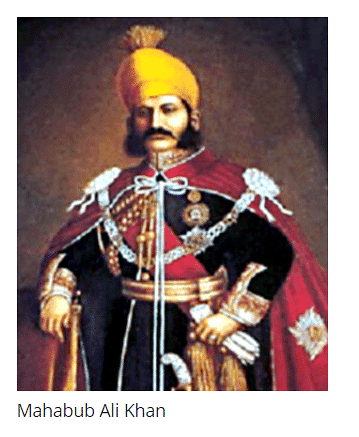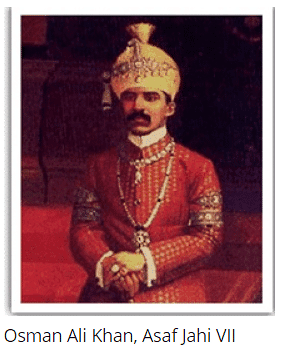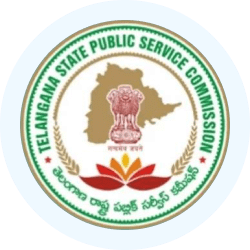Mahabubnagar - 1 | Telangana State PSC (TSPSC): Preparation Course - TSPSC (Telangana) PDF Download
History
District History
Telangana has a rich historical background, being a significant region throughout different dynasties. It was a key part of the Satavahana Dynasty from 221 BC to 218 AD. During the 5th to 11th century AD, it was under the Chalukyan Dynasty in South India. In more recent times, Telangana was integral to the Golconda State and Hyderabad State, ruled successively by the Qutub Shahi Dynasty (1520-1687) and the Asaf Jahi Dynasty (1724-1948) until the region was annexed by New Delhi in 1948. Telangana became independent and joined democratic India on 18th September 1948.
Telangana's Districts
- Adilabad
- Karimnagar
- Nizamabad
- Medak
- Warangal
- Khammam
- Hyderabad
- Rangareddy
- Nalgonda
- Mahabubnagar
Mahabubnagar District

- Mahabubnagar, a district in Telangana, was formerly known as "Rukmammapeta" and "Palamooru" before being renamed on 4th December 1890 to honor Mir Mahbub Ali Khan Asaf Jah VI, the Nizam of Hyderabad (1869-1911 AD). It has served as the district headquarters since 1883 AD. The region was once referred to as Cholawadi or the land of the Cholas. Notably, Mahabubnagar is known for its association with the Golconda diamonds, including the renowned "KOHINOOR" diamond.
- Geographically, Mahabubnagar district is positioned at the southern end of Telangana, bordered by Karnataka to the west, Kurnool district to the south, Nalgonda district to the east, and Rangareddy district to the north. The district is intersected by the Krishna and Tungabhadra rivers, adding to its historical and geographical significance.
Geographical Features of Mahabubnagar District
- The Krishna river enters Mahabubnagar District at Tangidi village of Maganoor Mandal, where it merges with the Bhima river, a tributary of Krishna.
- Two major projects, Jurala and Srisailam, have been constructed on the Krishna river in this district.
- The river Tungabhadra flows through the district and joins the Krishna river at Sangameswaram near Alampur.
- Ancient historical rivers can be found along the river banks and other locations in the district.
- Old Stone Age and New Stone Age sites are present at Pedda Maroor of Kollapur Mandal and various other places along the Krishna river.
Archaeological Significance of Mahabubnagar District
- Mahabubnagar District is renowned for its Megalithic Burial Sites, with over 200 sites from the Megalithic Period scattered across areas like Amrabad, Nadimpalem, Mudumal, Pedda Maroor, and more.
- Three types of burials are found in the district: Sisth, Dolmen, and Menher, with numerous burials at sites like Urkonda, Mudunal, and Kala konda.
- Various ruling dynasties have governed the Palamoor area since the 6th Century B.C., including Nandas, Mouryas, Sathavahanas, Ikshwakas, and several others.
History of South India
Asoka's Influence
- Asoka's Reign in 250 BC marked the southernmost reach of his empire.
Satavahana Dynasty (221 BC-218 AD)
- Known for their rule during this era.
Chalukyan Dynasty (5th-11th century AD)
- Significant dynasty in South India during this period.
Rashtrakutas Rule (9th Century)
- Brief yet impactful rule during the 9th century.
Kakatiya Dynasty (1100-1474 AD)
- Period of prominence and influence from 1100 to 1474 AD.
Bahamanis Dynasty (1347-1518)
- Noteworthy dynasty reigning from 1347 to 1518.
Qutub Shahi Dynasty (1518-1687)
- Period of rule from 1518 to 1687.
Mughal Domination
- Aurangazeb's Invasion
- Mughal annexation of Golconda in A.D. 1687
- Integration into the Mughal Empire
- Nizam's Appointment
Nizam Dynasty (Asif Jahi Dynasty) (1724-1948)

The Nizam Dynasty, also known as the Asif Jahi Dynasty, existed from 1724 to 1948. This ruling family accumulated immense wealth and led exceedingly lavish lives, setting new standards for extravagance. Nizam VII, a prominent figure of this dynasty, held the title of the wealthiest individual of his era.
- Nizam VII's opulent lifestyle exemplified the pinnacle of luxury during his time.
- He strategically aligned with the British, facilitating their dominance in India.
- Hyderabad State, under the Nizams' control, including areas like Mahabubnagar, maintained internal autonomy until September 17, 1948.
- On that date, Hyderabad State was peacefully integrated into the newly formed Indian Union.
District History: Samsthans

- The roots of the Rajas of Hindu Samsthans in the Nizam's Dominion trace back to the ancient Hindu Kingdom of Warangal. Primarily Zamindars and military leaders, they asserted control over neighboring regions, known as Palayams.
- Sixteen Samsthans persisted until Independence. Key Samsthans included Wanaparthi, Gadwal, Jetprole, Amarchinta, Palvancha, Gopalpet, Gurugunta, Kollapur, and Anagundi. The Rajas were forward-thinking and adept administrators.
The Gadwal Samsthans
- Spanning around 800 sq. miles between the Tungabhadra and Krishna rivers, Gadwal shifted allegiance to the Bahmani kingdom post the decline of the Warangal Andhra dynasty in the 14th century. Notable rulers like Pedda Veera Reddy, Peddanna Bhupaludu, Sarga Reddy, Veera Reddy, and Kumara Veera Reddy governed Gadwal from 1553 to 1704.
- During the rule of Nizam Ali Khan Asaf Jah II, the Marathas gained influence in parts of the Deccan, levying 'chouth' or 25% of revenue, known as 'Do-Amli', acting as a parallel government to the Nizam. Raja Sitaram Bhupal passed away in 1840, succeeded by his adopted son, Raja Sitaram Bhupal II. Nizam VII conferred upon him the title of "Maharaja." Upon his death in 1924, he left behind his widow and two daughters.
Wanaparthy Samsthans
- Located in Mahaboobnagar district, covering around 640 sq. miles, the Rajas of Wanaparthy Samsthans shared close ties with the Qutb Shahi kings. Initially, the Rajas maintained an army comprising 2000 infantry and 2000 cavalry. On March 17, 1843, Raja Rameshwar Rao was honored with the title of "Balwant" by Sikander Jah.
- The Samsthan was administratively divided into two taluqs - "Sugar" and "Kesampet," each overseen by Tahsildars. The "Maharaja" passed away on November 22, 1922, survived by his two sons, Krishna Dev Rao and Ram Dev Rao. Post-independence, this family also had representation in the Indian government.
The Samsthan of Jetprol
- Jetprol was an ancient and esteemed Samsthan. Pillalamarri Bethala Reddy, believed to be the founding figure of the Jetprole family, also established the lineages of the Rajas of Bobbili in Ganjam District, Pittapore (now Pittapuram in Godavari District), Malleswaram in Krishna District, and Venkatagiri in Nellore District.
- Upon ascending the throne, the young Raja abandoned his birth name Navanita Krishna Yachandra in favor of Raja Venkat Laxman Rao Bahadur. In 1929, the Raja passed away, leaving behind two daughters and his Rani.
The Amarchinta Samsthan
- The Amarchinta Samsthan covered an expanse of approximately 190 square miles in Mahabubnagar District.
- Following the passing of Raja Sriram Bhupal, a descendant of the family, his wife was recognized as the rightful heir to the Samsthan.
- The Amarchinta Samsthan was renowned for its high-quality muslin.
Kollapur Samsthan
- The Kollapur Samsthan encompassed a vast area along the banks of the River Krishna, extending across much of the Nallamala Forest region. Within this Samsthan, remnants of architectural marvels dating back to the 2nd century B.C. can be found.
- Numerous ancient temples, constructed over 1500 years ago, dot the landscape, serving as testament to the rich historical and cultural heritage of the region.
- During the Nizam's era, the Kollapur Samsthan wielded significant influence and played a pivotal role in the region.
|
80 docs|74 tests
|
FAQs on Mahabubnagar - 1 - Telangana State PSC (TSPSC): Preparation Course - TSPSC (Telangana)
| 1. What are some of the geographical features of Mahabubnagar District? |  |
| 2. What is the archaeological significance of Mahabubnagar District? |  |
| 3. What is the history of South India? |  |
| 4. What was the Nizam Dynasty (Asif Jahi Dynasty) known for? |  |
| 5. What are some of the prominent Samsthans in the history of Mahabubnagar District? |  |















